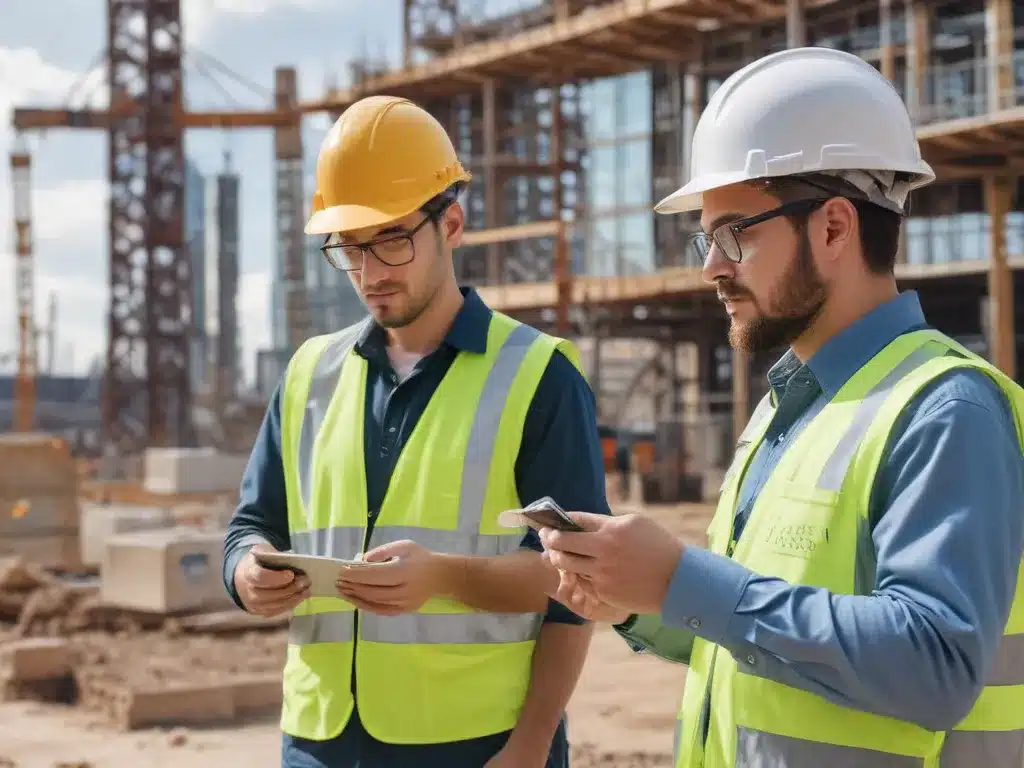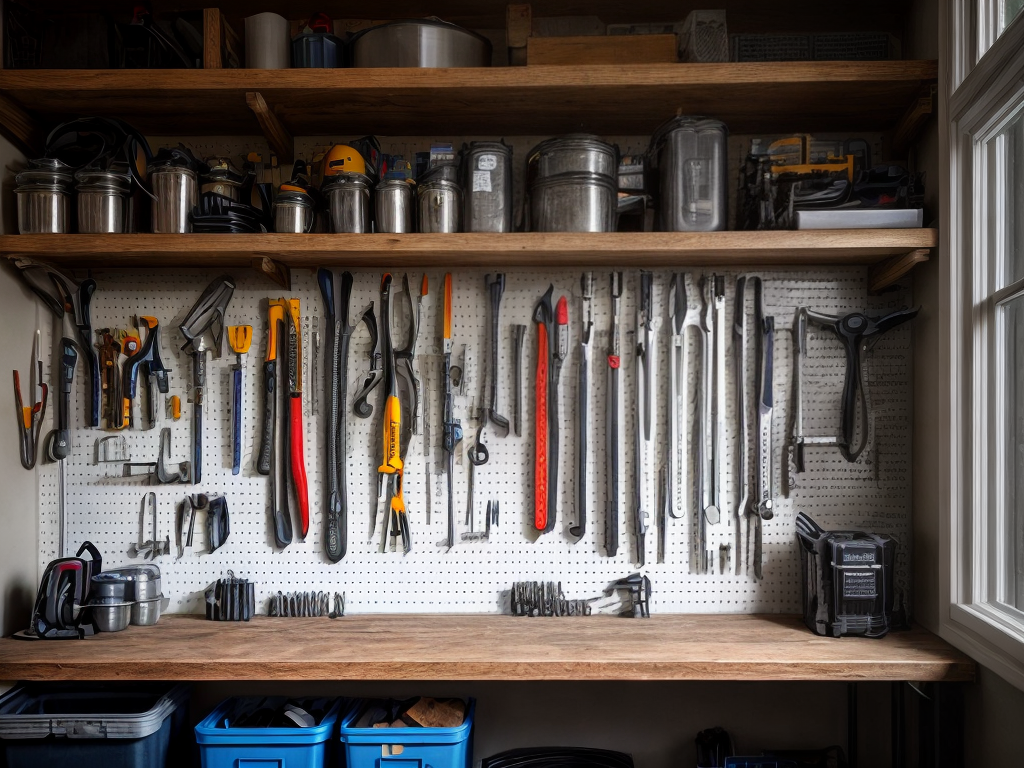
Introduction
h2: What is IoT and why should the construction industry care?
The Internet of Things (IoT) is a rapidly growing network of interconnected devices that can collect, share, and analyze data. From smart home assistants to self-driving cars, IoT has revolutionized how we interact with technology. But what does this have to do with the construction industry? Well, my friends, IoT is about to shake up our job sites in ways that will blow your hard hats off!
As a construction worker, I’m all too familiar with the challenges of managing complex projects. We’re constantly juggling schedules, materials, equipment, and crews, all while ensuring safety and quality. It’s like trying to herd a bunch of hyperactive cats (with power tools). Enter IoT, the game-changer that promises to bring order to the chaos and streamline our operations like never before.
IoT Applications in Construction
h2: How can we leverage IoT to create connected job sites?
Imagine a world where every tool, machine, and material on your job site is connected and communicating with each other. It’s like having a digital symphony conductor orchestrating the entire project. Let’s explore some mind-blowing IoT applications that are already transforming construction:
1. Equipment Monitoring and Predictive Maintenance
h3: Keeping your machines in top shape with IoT
We’ve all been there – a piece of equipment breaks down in the middle of a job, causing costly delays and headaches galore. But with IoT, those days may soon be a distant memory. By embedding sensors in your heavy machinery and tools, you can continuously monitor their performance, track usage patterns, and even predict potential failures before they happen.
How cool is that? It’s like having a crystal ball that lets you know when your trusty excavator needs a tune-up or when your jackhammer is about to throw a tantrum. No more unexpected breakdowns, no more scrambling for replacement parts – just smooth sailing and maximum productivity.
2. Material Tracking and Inventory Management
h3: Say goodbye to material mayhem with IoT
Remember that time when you were frantically searching for that elusive pallet of bricks, only to find it buried under a mountain of lumber and drywall? Or how about those countless hours wasted tracking down misplaced tools and equipment? With IoT, those nightmares can finally be put to rest.
By attaching RFID tags or GPS trackers to your materials, tools, and assets, you can easily monitor their locations, movements, and quantities in real-time. No more guesswork, no more lost items – just a streamlined, efficient workflow that keeps your job site running like a well-oiled machine.
3. Worker Safety and Productivity Monitoring
h3: Keeping your crew safe and productive with IoT
On a construction site, worker safety should always be the top priority. But let’s be real, it’s not always easy to keep an eye on everyone and everything, especially on a large, dynamic job site. That’s where IoT comes in, acting as your digital safety net and productivity booster.
By equipping your workers with wearable devices or embedding sensors in their gear, you can monitor their vital signs, track their movements, and ensure they’re adhering to safety protocols. Need to evacuate the site due to a hazardous situation? IoT can help you quickly locate and account for every single worker. Want to optimize workflow and identify bottlenecks? IoT can provide valuable insights into productivity patterns and resource allocation.
Real-World IoT Implementation in Construction
h2: Case studies and success stories from the field
Okay, so IoT sounds pretty amazing in theory, but how does it actually work in the real world? Let’s take a look at some real-life examples of construction companies that have successfully integrated IoT into their operations:
1. Atchison Construction Inc. – https://atchisonconstructioninc.com/
h3: Leading the way with IoT-powered job sites
Atchison Construction Inc. is a forward-thinking company that has embraced IoT with open arms. They’ve implemented a comprehensive IoT system that covers everything from equipment monitoring to material tracking and worker safety.
One of their most impressive achievements is the installation of IoT sensors on all their heavy machinery. These sensors constantly monitor the equipment’s performance and alert the maintenance team of any potential issues before they escalate into costly breakdowns. This proactive approach has significantly reduced downtime and increased productivity on their job sites.
But that’s not all – Atchison Construction Inc. also utilizes RFID tags and GPS trackers to keep tabs on their materials and assets. No more lost or misplaced items, no more wasted time and resources. Their workers can easily locate the materials they need, when they need them, ensuring a smooth and efficient workflow.
And let’s not forget about worker safety – a top priority for this company. By equipping their crews with wearable IoT devices, Atchison Construction Inc. can monitor their movements, vital signs, and adherence to safety protocols. If an emergency situation arises, they can quickly locate and evacuate their workers, minimizing the risk of injuries or accidents.
2. Interview with a Construction Site Manager
h3: Insights from the frontlines of IoT adoption
To get a firsthand perspective on the impact of IoT in construction, I sat down with Samantha, a seasoned site manager who has been overseeing IoT implementation on her projects. Here’s what she had to say:
“Before we integrated IoT, managing a large construction site felt like a constant game of whack-a-mole. We were always putting out fires, dealing with unexpected breakdowns, and scrambling to locate misplaced materials or tools. It was chaos, plain and simple.
But then we decided to take the plunge and invest in IoT technology. And let me tell you, it’s been a game-changer. From the moment we installed sensors on our equipment and started tracking our materials with RFID tags, it was like a weight had been lifted off our shoulders.
Now, we can predict and prevent equipment failures before they happen, saving us countless hours of downtime and keeping our projects on schedule. And forget about wasting time searching for lost materials – everything is accounted for and right at our fingertips.
But the real game-changer has been the worker safety aspect. With wearable IoT devices, we can constantly monitor our crew’s well-being and ensure they’re following proper safety protocols. If an emergency situation arises, we can quickly locate and evacuate everyone, minimizing the risk of injuries or accidents.
Sure, there was a bit of a learning curve initially, and some resistance from the old-school crew members. But once they saw how much smoother and more efficient our operations became, they were sold.
I can’t imagine going back to the old way of doing things. IoT has truly revolutionized how we manage our job sites, and I’m excited to see what other innovations are in store for the construction industry.”
Challenges and Considerations
h2: Addressing the potential roadblocks to IoT adoption
While the benefits of IoT in construction are undeniable, it’s important to acknowledge and address some of the potential challenges and considerations that come with adopting this technology:
1. Cybersecurity Risks
h3: Keeping your connected job sites secure
With the increased connectivity and data sharing that comes with IoT, there are inherent cybersecurity risks that need to be addressed. Construction companies must implement robust security measures to protect their IoT systems from potential cyber threats, such as hacking, data breaches, and malware attacks.
This may involve investing in advanced encryption technologies, implementing strict access controls, and regularly updating and patching IoT devices and software. It’s also essential to train employees on cybersecurity best practices and establish clear protocols for responding to potential security incidents.
2. Integration and Interoperability
h3: Getting all your IoT devices to play nicely together
One of the challenges of implementing IoT in construction is ensuring seamless integration and interoperability between different devices, systems, and platforms. With so many different vendors and proprietary technologies in the mix, it can be a daunting task to get everything talking to each other seamlessly.
Construction companies may need to work closely with IoT solution providers and vendors to ensure compatibility and develop standardized protocols for data exchange and communication. Open standards and industry-wide collaboration can help mitigate this challenge and facilitate a more cohesive IoT ecosystem within the construction industry.
3. Cost and ROI Considerations
h3: Justifying the investment in IoT technology
While the potential benefits of IoT in construction are compelling, the initial investment required to implement these technologies can be significant. Construction companies need to carefully evaluate the costs associated with purchasing and installing IoT devices, sensors, software, and supporting infrastructure.
Additionally, they must consider the ongoing costs of maintaining and updating these systems, as well as the potential need for specialized IT personnel or outsourced support.
To justify the investment, construction companies must conduct thorough cost-benefit analyses and calculate the potential return on investment (ROI) through increased efficiency, productivity gains, cost savings, and other tangible benefits. Demonstrating a clear and quantifiable ROI can help secure buy-in from stakeholders and decision-makers.
4. Change Management and User Adoption
h3: Getting your crew on board with the IoT revolution
Implementing any new technology, especially one as transformative as IoT, inevitably comes with challenges related to change management and user adoption. Construction crews, who may be accustomed to traditional methods and processes, may initially resist or struggle with the adoption of IoT technologies.
To overcome this challenge, construction companies must prioritize effective communication, training, and change management strategies. They should clearly articulate the benefits and rationale for adopting IoT, address concerns and misconceptions, and provide comprehensive training and support to ensure a smooth transition.
Involving end-users (such as site managers, crew leads, and workers) in the planning and implementation process can also help build buy-in and increase the likelihood of successful adoption.
The Future of IoT in Construction
h2: Exploring the potential for further innovation and disruption
As exciting as the current applications of IoT in construction are, we’ve only scratched the surface of what’s possible. The future holds even more mind-blowing innovations and disruptive technologies that will continue to reshape the industry:
1. IoT and Artificial Intelligence (AI)
h3: Building smarter, more autonomous job sites
Imagine combining the power of IoT with the capabilities of artificial intelligence (AI). This dynamic duo could pave the way for truly autonomous and self-optimizing construction sites.
AI algorithms could analyze the vast amounts of data collected by IoT sensors and devices, identifying patterns and insights that would be impossible for humans to discern. These insights could then be used to automatically adjust and optimize processes, resources, and workflows in real-time, maximizing efficiency and productivity.
AI could also play a role in predictive maintenance, using machine learning to anticipate equipment failures and schedule proactive maintenance before breakdowns occur. The possibilities are endless, and the construction industry is just starting to scratch the surface of this powerful combination.
2. IoT and Robotics
h3: Automating tasks and enhancing safety with IoT-enabled robots
Robots have been slowly making their way onto construction sites, but the integration of IoT could take their capabilities to new heights. IoT-enabled robots could be programmed to perform a variety of tasks, from material handling and assembly to inspection and surveying.
These robots could be controlled and monitored remotely through IoT systems, allowing for safer and more efficient operations in hazardous or hard-to-reach areas. They could also be equipped with sensors and cameras, collecting valuable data and providing real-time insights into job site conditions.
The combination of IoT and robotics has the potential to automate many labor-intensive and dangerous tasks, improving safety and productivity while also addressing the industry’s ongoing labor shortage challenges.
3. IoT and Modular Construction
h3: Streamlining offsite construction with IoT connectivity
Modular construction, where building components are prefabricated offsite and then assembled on the job site, is gaining traction in the industry. IoT technologies could play a crucial role in optimizing and streamlining this approach.
By embedding IoT sensors and trackers into the prefabricated modules, construction companies could monitor their transportation, storage, and assembly processes in real-time. This would enable better coordination, scheduling, and logistics management, ensuring that the right components arrive at the right place and time.
Additionally, IoT could be used to track the performance and maintenance needs of these modular units throughout their lifespan, providing valuable data for future design and construction improvements.
Conclusion
h2: Embracing the IoT revolution in construction
The construction industry is on the cusp of a technological revolution, and IoT is leading the charge. By integrating these connected technologies into our job sites, we can unlock a world of efficiency, productivity, and safety that was once just a pipe dream.
From predictive maintenance and material tracking to worker safety and autonomous operations, IoT has the potential to transform every aspect of the construction process. And as we continue to explore the synergies between IoT, AI, robotics, and modular construction, the possibilities for innovation and disruption are truly limitless.
But implementing IoT is not without its challenges. We must address cybersecurity risks, interoperability issues, cost considerations, and user adoption hurdles. However, with careful planning, collaboration, and a willingness to embrace change, these challenges can be overcome, paving the way for a more connected, intelligent, and sustainable construction industry.
So, fellow construction professionals, it’s time to embrace the IoT revolution. Let’s ditch the old ways of doing things and step boldly into the future of connected job sites. Trust me, your future self (and your hard hat) will thank you.





